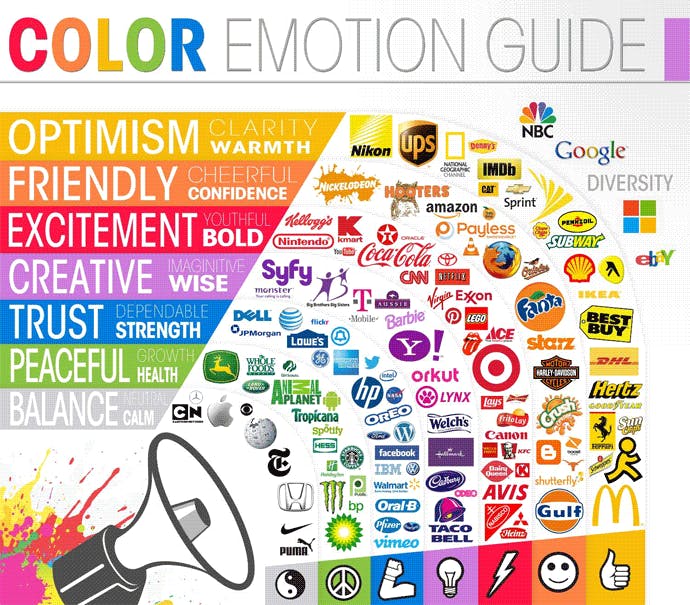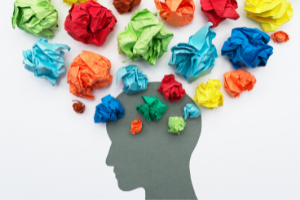What would the world be without colour? I really couldn’t image it, could you?
The artist Pablo Picasso once said, “Colours, like features, follow the changes of emotions,” colour is a powerful tool that can be used to form a specific image in the mind, influence mood and even influence reactions. Regardless of language or culture, we all use colours to represent and portray emotional states, whether it be going green with jealously, seeing red with anger, or feeling blue to signify sadness. Colours have their own emotional associations and we react accordingly.
What is colour psychology?
Colour psychology can be identified as the theory of how colours affect individuals’ perceptions and behaviours. Throughout many industries the concept of colour psychology has taken off and observations have been made. For example, in Market Research, researchers focus on how colours can influence mood, feelings and even purchasing habits.
Colour is often underestimated by brands in their product design and branding; however, the results can be amazing. A study found that colour improves brand recognition by up to 80% - take McDonald’s for example, how many children when they see the golden arches of McDonald’s suddenly have to have one? This isn’t happening just by coincidence. They’re remembering that with McDonald’s not only will they get a meal, they will get a toy to play with which results in a happy and memorable experience. All. Just. Though. Colour.
Consumers making a purchase
As we’ve identified, colour has a lot of credit to take when it comes to influencing mood, representation and even emotional states. However, it is also responsible for some of your sales.
When creating your marketing assets, it can be essential to make sure you’re using the right colour, after all it could be the make or break as to why a consumer never picked your product. In a study titled “Impact of colour on marketing,” researchers found that consumers make up their mind within 90 seconds of their first encounter with a person or a product – and around 62-90% is based on colour alone. So, technically, colour plays a huge role in whether or now your product will make it off the shelf.
Although perception of colour can be subjective to the individual, there is a general universal theme. For example, there have been studies to show that some people looking at the colour red on a pack design have an increased heart rate, leading to more adrenaline being pumped into the blood stream causing excitement. It can be noticed that warm colours can evoke different emotions like love or hate, whereas cool colours such as greens or purples can suggest either calmness or sadness. So, making sure you have a solid understanding of what your product is telling the world is essential.
For example:

Credit: The Logo Company
Gender differences
Joe Hallock had examined colour psychology in relation to gender across Western societies. In Hallock’s “Colour Assignment,” he has showcased some clear preferences in specific colours across gender. He noted that cultural perception — plays a strong role in dictating colour suitability for gender, which, can naturally influence an individual colour preferences e.g. Pink Tax for women’s products.
So, although individual favourite colours are subjective to each individual person, research identifies different genders tend to favour certain colours on a whole, with 76% of women prefer cool colours compared to 56% of men. However, universally, studies have shown that blue is a clear favourite for both men and women. One study explained why blue is such a popular colour and found that it’s connected with clean water, clear skies, authority, truth and calmness. Consequently, if you have a universal product, incorporating blue elements on your packaging might help you increase sales or target a larger audience.
The use of colour can make your product stand out from the crowd, although it might not necessarily make or break your brand, it can create a great first impression.
You can’t just focus on colour
Suddenly the reality hits in… It’s probably very clear that you can’t just focus on the colour of your product because that isn’t the only factor that contributes to a consumer making a purchase. For example, price, age, gender, and selection. Not only that, colour preference can actually change. Think about when you were younger, what was your favourite colour and has it changed as you’ve grown up? We don’t relate to the same products we did – it’s just natural evolution.
There are three key elements to successful packaging and they all have different drivers. You pack needs to first draw attention, then needs to engage the shopper and finally close the sale. The design elements you need to consider for attention differ from those for engagement and conversion. Colour plays a role at all three stages. To optimise the use of colour on your packaging, research is essential. Emotional Logic offers an award-winning online test that helps you get it right.
A consumer might have preferred a brighter, more standout colours when younger, but now as they have matured, they want to blend in and prefer more traditional colours. A consumer’s personality can also affect their decision, however, price and promotion as well as availability are huge influencers too – especially now with the rise of online shopping.
In-store you will have to focus on product standout and shelf findability. Did you know that most product packaging can be found within 3 seconds? Its crucial that you’re conveying the right messages to attract and engage past, current and potentially new consumers each time they see your product – whether it be in-store or online! To find out more on standout and shelf findability, read our blog here.
So, to conclude, although colour can play a huge role in conveying information and grabbing attention, it isn’t the only factor to contribute to the purchase decision. Carrying out behavioural science research will help you understand the truth on how shoppers really react (both consciously and subconsciously) to your packaging.
Whether you need insight to adjust your strategies for existing brands to the new normal or are thinking about launching new products we can help you get it right. Emotional Logic is a specialist behavioural insight agency and we offer a range of award-winning research solutions to ensure your strategy connects with the constantly shifting needs of the consumer. Please get in touch for a free consultation.
